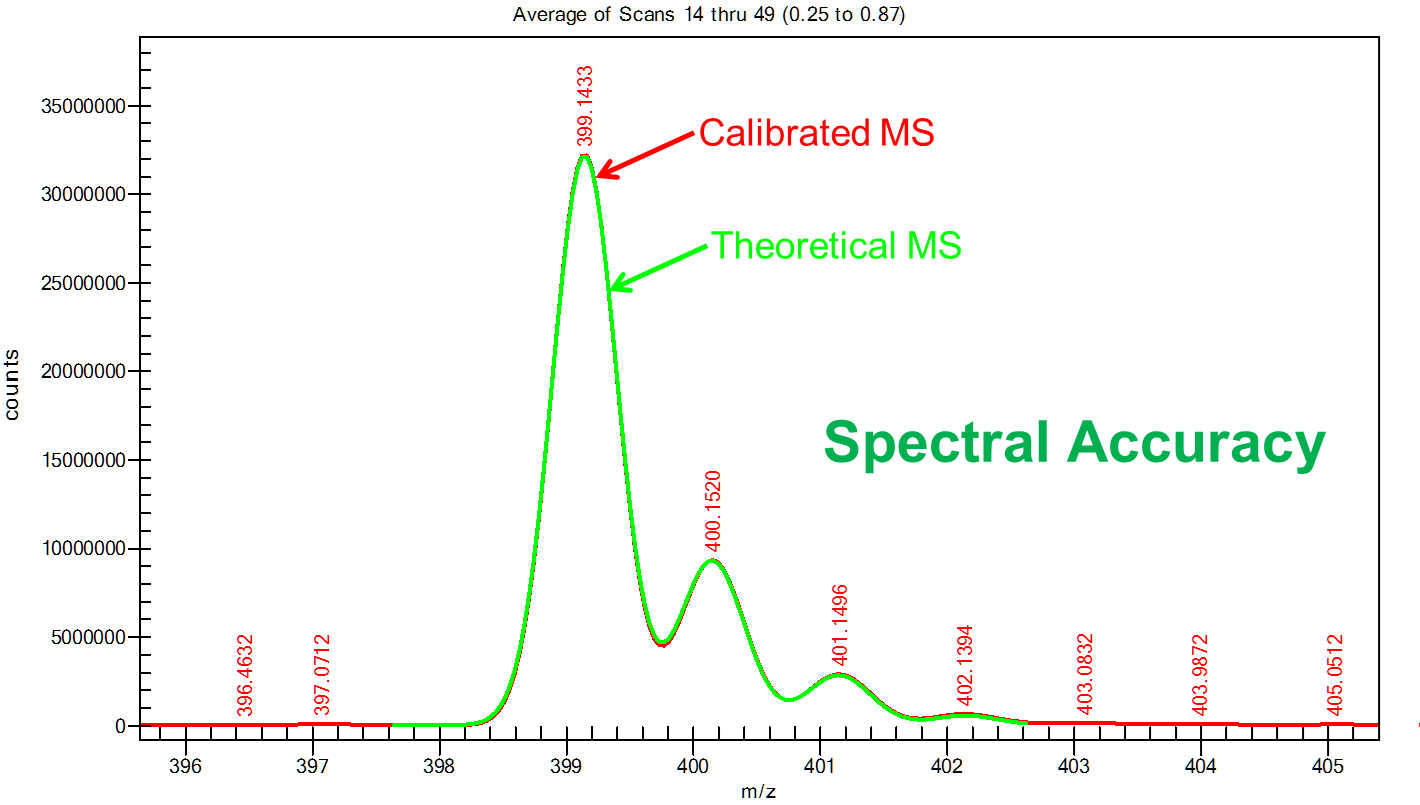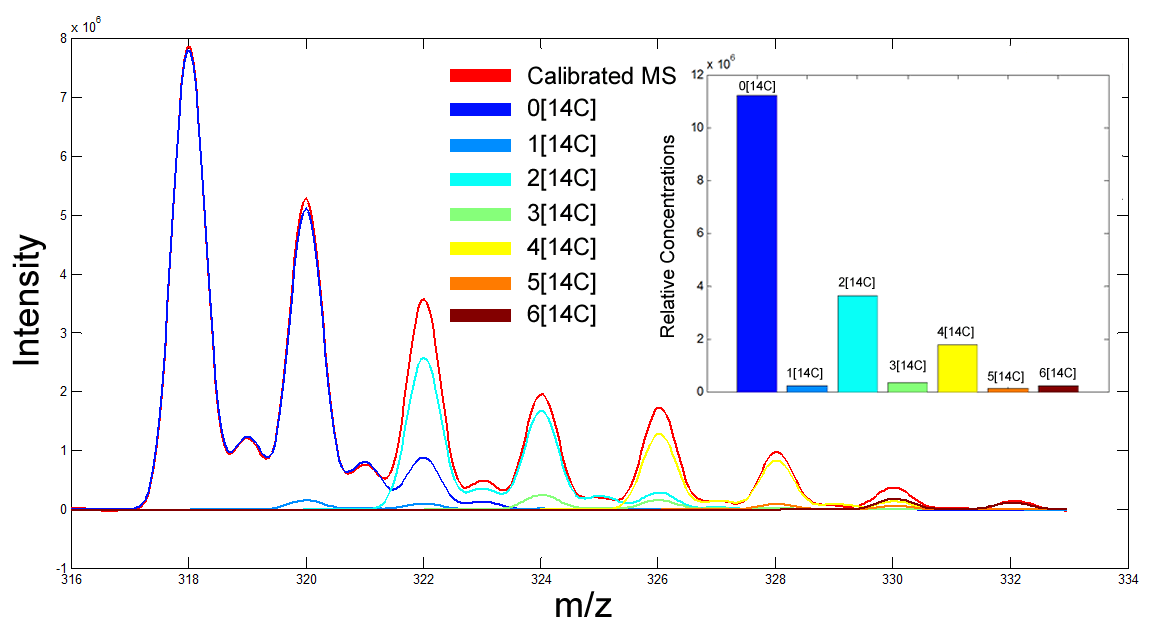Spectral Accuracy is a measure of the similarity between the measured isotope pattern (ion’s mass spectrum) and the ion’s true mass spectrum sampled in the profile or continuum mode. Without proper line-shape calibration, Spectral Accuracy values are of limited use in identifying the unknown formula. An ion’s isotope pattern is unique for every unique formula and significantly richer in information than the measurement of a single peak position, as with accurate mass measurements. An ion’s mass spectrum is composed of many peaks each with unique relative intensities based on their isotopic abundances, and unique relative mass positions based upon the mass of each isotope. Spectral Accuracy is a measure of the similarity between the measured spectra (the entire isotope envelope) against that of the true spectrum which can be accurately calculated.
However, since the line-shape of the measured spectrum is unknown, measures of Spectral Accuracy are generally not high enough to provide a unique formula ID. Cerno’s MassWorks™ software elegantly addresses this problem by not only calibrating the mass position of the peak, but by also calibrating the line-shape to a mathematically defined function. This allows extremely accurate comparisons to be made between measured and true spectra with Spectral Accuracy values capable of uniquely identifying an unknown ion formula.
Once the line-shape is properly calibrated, not only can one perform more accurate formula search, but it becomes possible to accurately deconvolve complex mixtures. Overlapping interferences and background are perhaps one of the most perplexing problems in mass spectrometry. Since the mass spectra can now be accurately calibrated and quantitatively compared with true mass spectra, mixture deconvolution, including direct quantitation of isotope-labeled compound mixtures, becomes trivial.
- Spectral Accuracy Defined
- Learn About Spectral Accuracy (Analytical Chemistry Feature Article)
- Cerno Calibration Tutorial (Video)
- Spectral Accuracy to Differentiate Elemental Composition (Animation)


